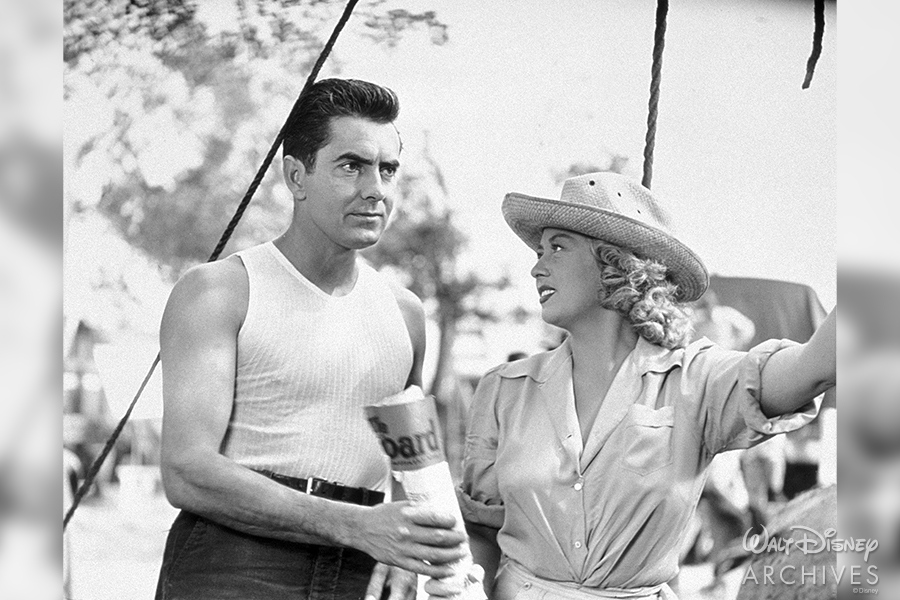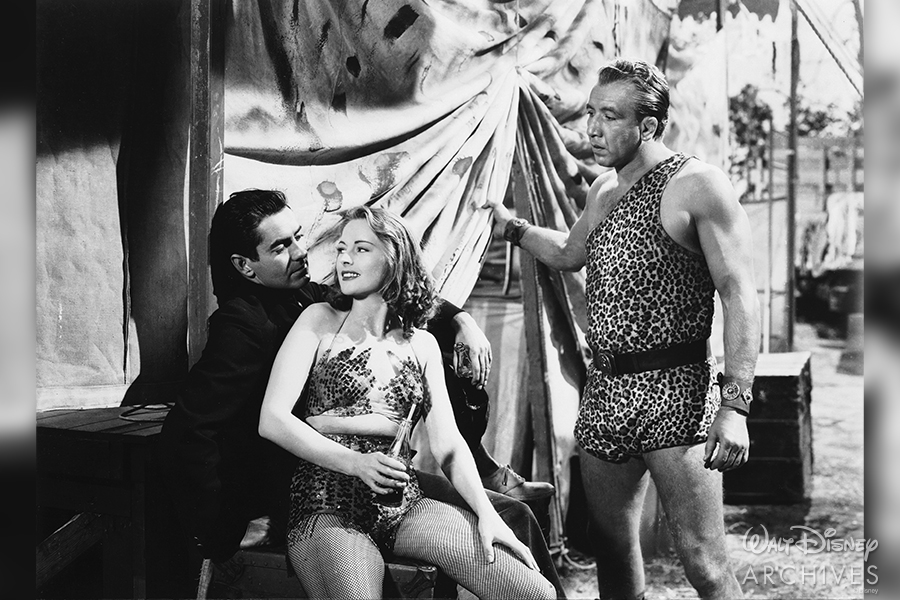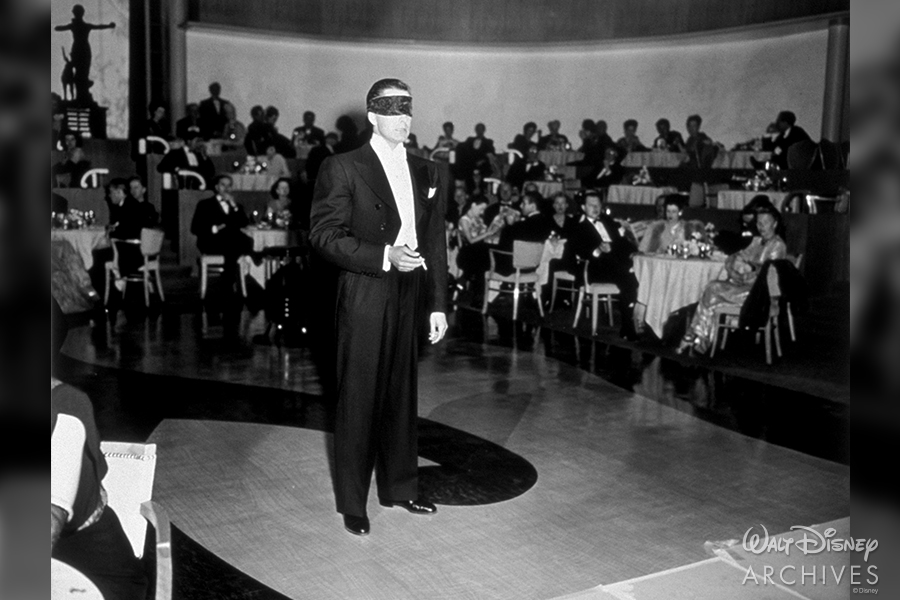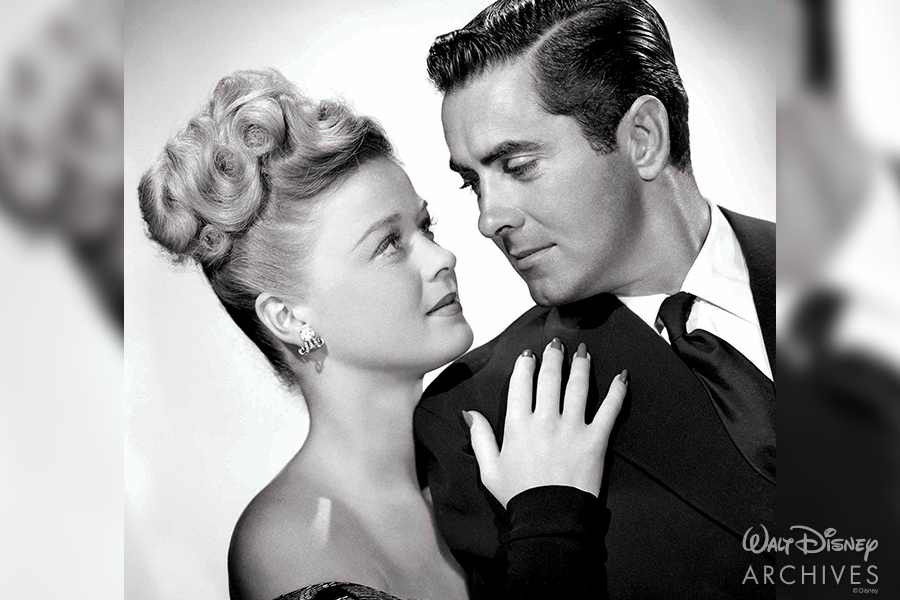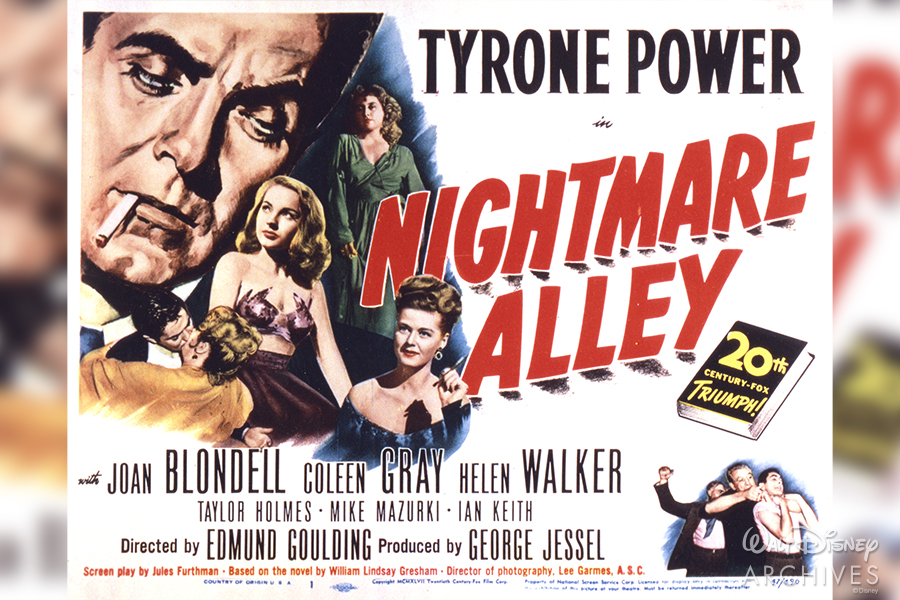By Christina Pappous, Walt Disney Archives
As fall swiftly approaches, and with it, the scariest of holidays—Halloween!—we’re taking a “spooktacular” decade-by-decade tour through the most haunting films from 20th Century Fox. While our first stop on the tour may not trade in ghouls and ghosts, Nightmare Alley (1947) asks a question perhaps scarier than anything else: How can anyone get so low?
Set in the seedy world of carnivals and charlatans, Nightmare Alley is a film full of twists, turns, and triple crossings. It tells the story of the ambitious and cunning carnival barker Stanton “Stan” Carlisle, as played by Tyrone Power, and his meteoric ascent from assistant to the carnival’s mentalist, Zeena (Joan Blondell), to “The Great Stanton,” the sophisticated spiritualist to Chicago’s high society. During one of his performances, Stan crosses paths with psychiatrist Lilith Ritter (Helen Walker), and the two concoct a plan to swindle Stan’s wealthy patrons. Ultimately, Stan’s greed and arrogance prove to be his undoing, and he comes crashing down, uttering “Mister, I was made for it” as he descends into the lowest of the low of carnival folk: the geek.
Nightmare Alley is an unusual film, both in its story and its production. While it certainly follows the stylistic conventions of classic film noir—from its morally ambiguous characters and chiaroscuro lighting—the film’s carnival setting and evocations of magic and spirituality render it unique and genre-defying. Lead actor Tyrone Power was one of most popular stars at 20th Century Fox, and studio head Darryl F. Zanuck was incredibly reluctant to let Power, then primarily known for his matinée idol good looks and roles in in romantic swashbucklers like The Mark of Zorro (1940), take on a character as slimy as Stanton Carlisle. Power, freshly returned from active duty as a pilot in the Marines, sought to take on more complex and challenging roles and fought hard to get Nightmare Alley made.
The film was neither well received by critics nor audiences upon its initial release, but over the years, Nightmare Alley has become a classic, and its sordid exploration of how anyone can get so low continues to haunt audiences today.




